Crochet
By Adeline Panamaroff
Adeline, a freelance writer/proofreader, located in Edmonton, Alberta can be contacted at www.adelinepanamaroff.com for writing and marketing requests.
History: Like many other fibre arts, crochet’s exact origins are a bit obscure. There are several ancient examples of simple forms of crochet-like techniques in places like China, South America and North Africa, but whether they are related to how modern crochet developed cannot be verified. The direct links to modern crochet can clearly start to be seen in 17th Century Europe. Tambour embroidery is thought to be the main precursor to what is known as crochet today. This French embroidery style used sheer fabric or mesh stretched tightly over a hoop and the embroidery threads are worked through the material with a very small hook, much like a crochet hook, using mainly the chain stitch. As the 1600s wore on, tambour embroidery continued to evolve, while a different branch of this fibre art developed without the use of backing fabric. At the time this new innovation was called crochet in the air. The word crochet came from an old French word for hook. It is known by other names, such as haken, haekling, hekling, virkning, shepherd’s crochet, or Irish crochet, depending on the region.
Crocheted doily / Pattern unknown / Stitched by Florence M.
The art of crochet spread throughout Europe through trade routes, and the movement of people through marriage and travel. It had long been a hobby for Irish peasant farmers when the Potato Famine hit in 1845. From this time till 1850 it was to crochet that many farming families turned to in order to sustain themselves financially, while their crops spectacularly failed to bring in an income. Women, men and children would work on crocheted lace, in between other farm obligations, taking advantage of the daylight hours, and then would continue on projects inside, huddled by the fire or oil lamps. Crochet schools were even formed to teach struggling farmers a new more lucrative skill. Made from thread, these fine lace pieces, being produced in such large quantities came to be a cheaper version of more older types of laces like tatting, and so allowed the more common people access to lace trims that imitated the opulent look of the upper crust. The popularity of crocheted lace in the lower classes of British society led to it being looked down on by the elite. Queen Victoria did her part to wipe away this stigma by embracing Irish crochet, learned how to work the stitches and even made 8 scarves to veterans of the South African War.
The demand for crocheted items led to their export out of Ireland and into Europe. This demand allowed many starving Irish farmers to survive the Potato Famine, and even save up money to purchase passage to the Americas. It is with this migration of Irish potato farmers in the late 1800s that introduced the art of crochet to a whole new audience of fibre workers.
Crocheted afghan / Pattern unknown / Stitched by Martha G.
Crochet patterns started to be published in the late 1800s in such magazines as Harper’s Bazaar. New and innovative patterns continued to be developed so that crochet expanded out to the world of lace and entered into the wider realm of fashion as hats, complete gowns, sweaters, and gloves. The early 1900s saw the increase in availability of different fibres for yarns, due to the mechanisation of many spinning processes. This allowed crocheters to work with thicker yarns that allowed them to create larger fashion items.
World Wars I and II saw crochet take on a more utilitarian use as both the American and British governments encouraged home makers to crochet items like socks, mittens, and hats for their family members on the war fronts.
In the 1950s to 60s courser yarns and the introduction of the granny square pushed this fibre art into the domestic sphere. Pot holders, tea cosies, aprons, afghans, children’s clothing and toys featured the thicker yarns and patterns based on the granny square.
Today crochet still has a lively active following, made all the more vibrant and global due to online communities and discussion forums. High-end fashion has even resurrected the granny square as focal points in garments.
Technique: There are several basic stitches, like single chain, double chain and half crochet. Other more complex stitches are based on these, like Tunisian, and shell stitch. There is only one active stitch at the end of the piece being worked, with one strand of yard being drawn in through the last stitch created.
Crocheted pincushion / Pattern unknown / Stitched by Florence M.
Crochet is manufactured with one hook, of varying size, depending on the thickness of yarn being used. Today there are 25 different sizes of hook a person can use. Hooks can be made from plastic, metal, or even bamboo. Throughout the history of crochet, hooks could simply have been a person's finger, or made from animal bone, stone, stiff wire embedded into a piece of cork, or even reshaped spoon handles.
The fibres used in yarns today are both synthetic, plant based and animal based. Yarns can even be formed from strips cut from old t-shirts (tarn) or plastic shopping bags (plarn). Historically, anything from human, animal hair, and plant fibres were used to make crocheted items.
Innovation: Today crochet patterns are shared quickly and easily across the globe with the aid of the internet and such fibre platforms as Rivalry. Crochet has even entered the world of pop culture in the form of amigurumi. These small dolls, of Asian origin, can be created to look like any character from comics books, movies and video games.
Afghans, socks, mittens and hats continue to be popular items that current day crocheters choose to create as a staple of their hobby.
References and Further Reading:
Note: The links above lead to external content. ENG is not responsible for the content of external sites.
